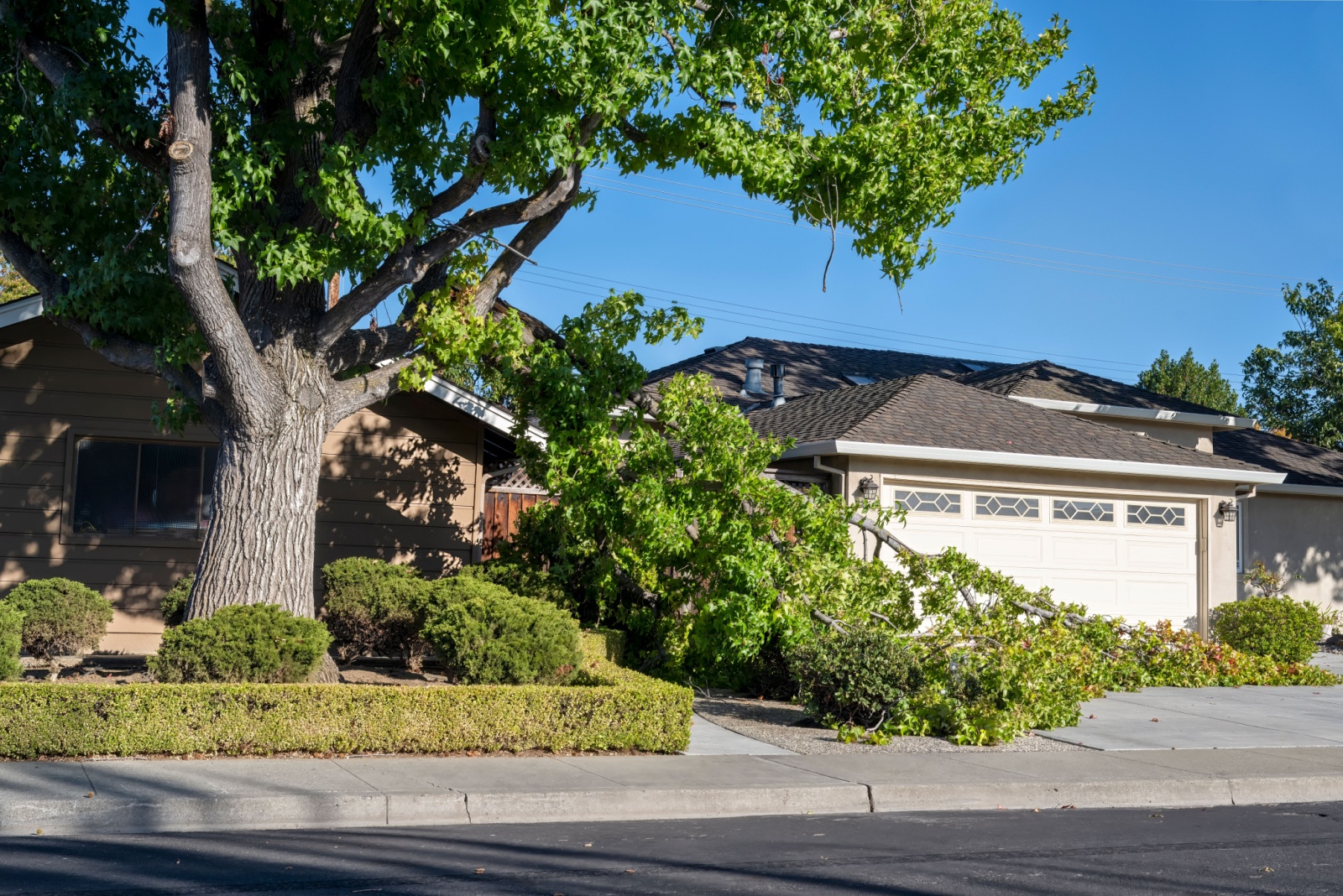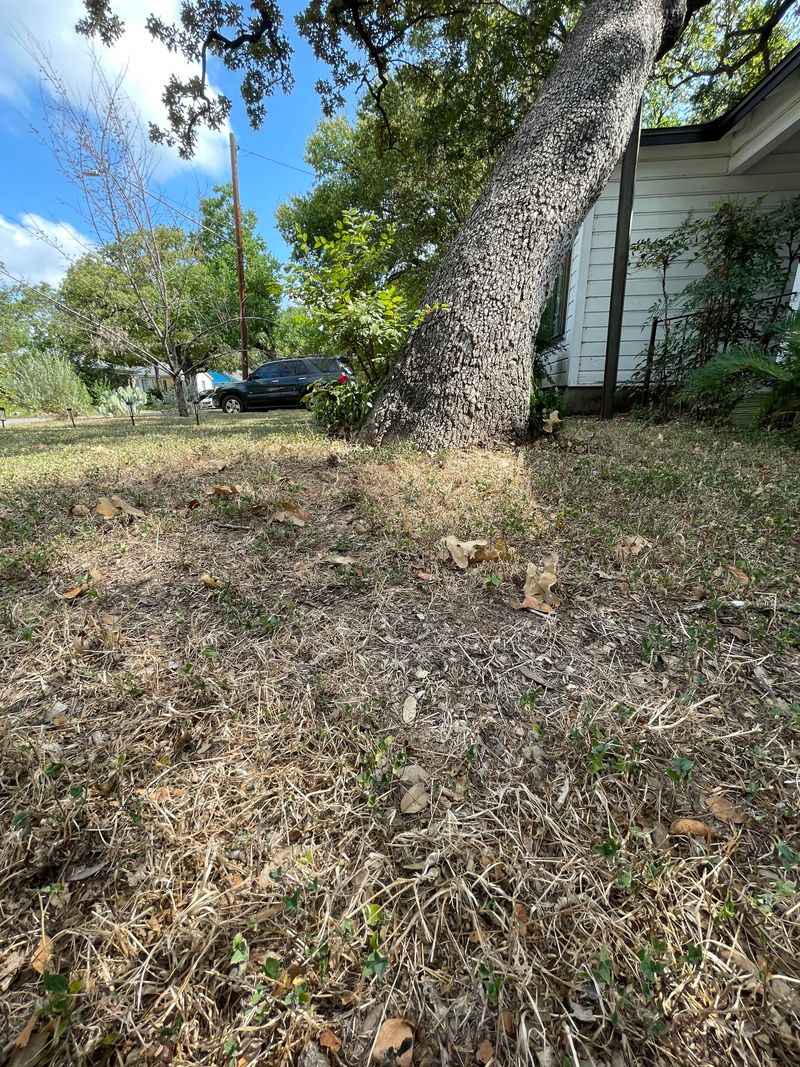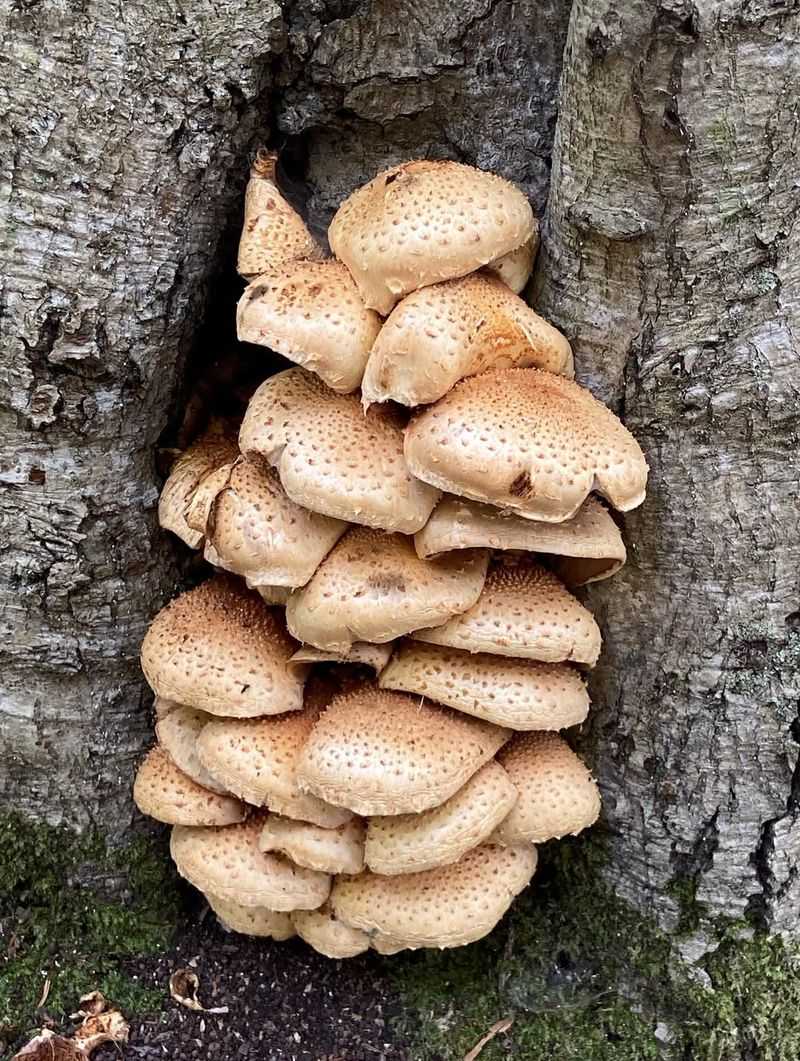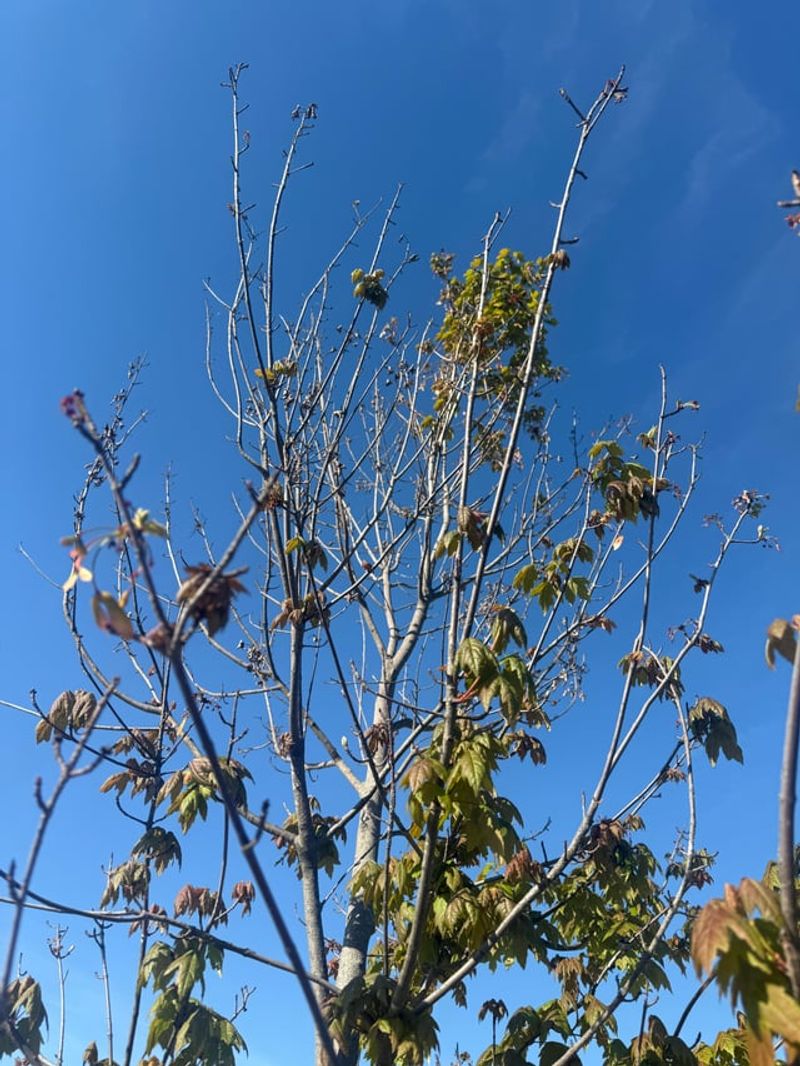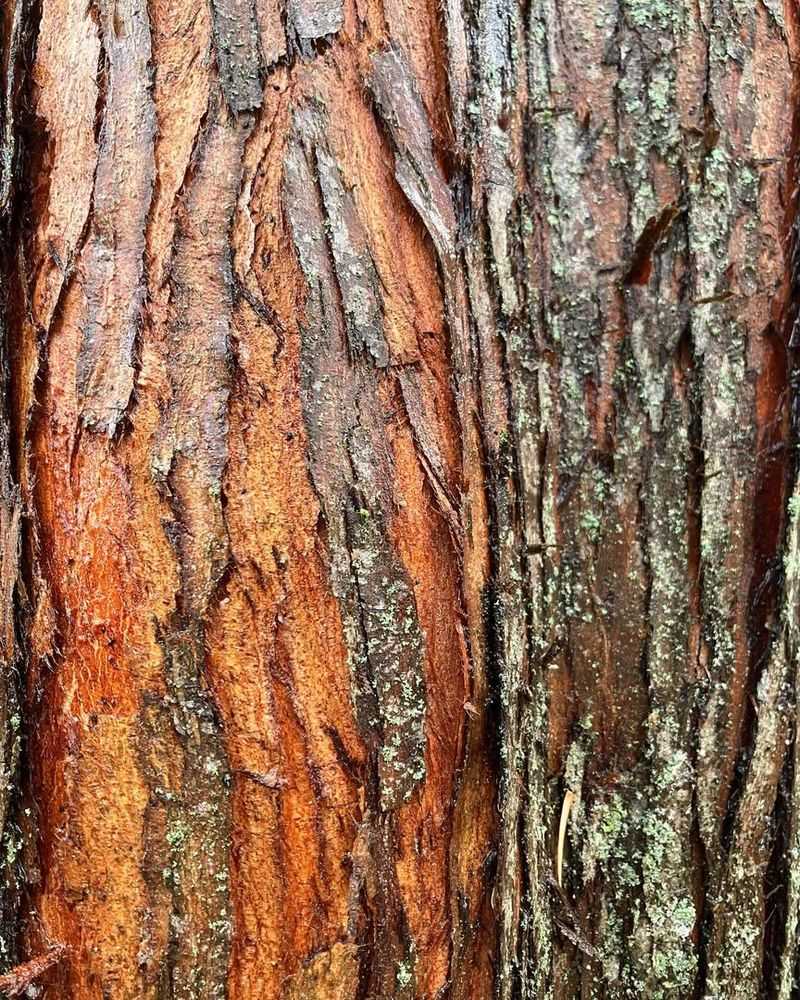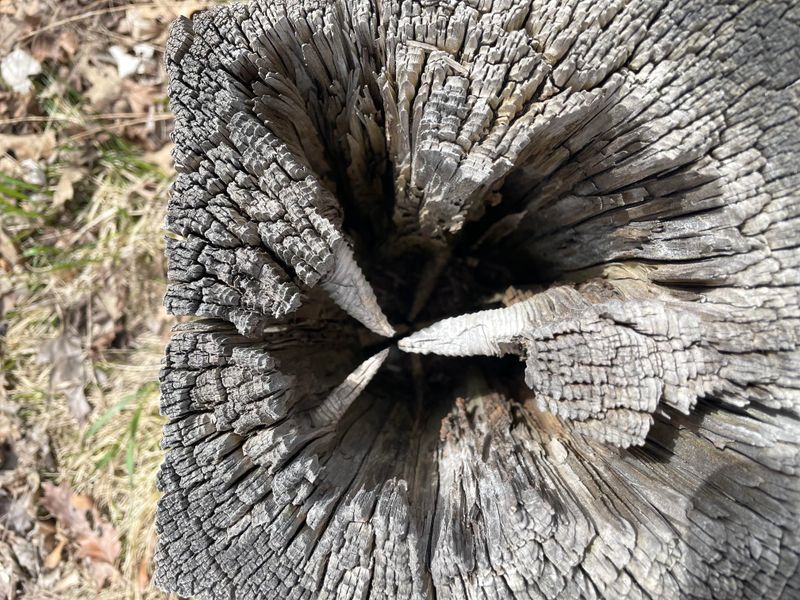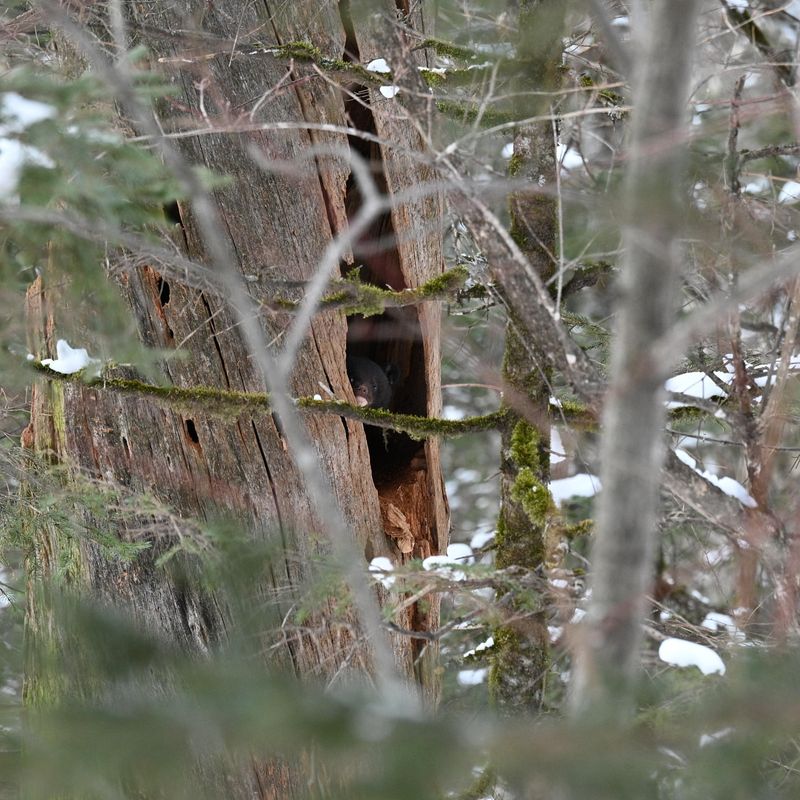Michigan homeowners know that trees add beauty and value to our properties, but they can also pose serious risks when damaged or diseased. With our state’s unique weather patterns—from ice storms to summer thunderstorms—trees face constant challenges.
Knowing what to look for could prevent property damage or even save lives, so let’s examine seven critical warning signs that a tree on your Michigan property might be unsafe.
1. Deep Cracks In The Trunk
Large vertical cracks running along the trunk are serious red flags. When I spotted a split in my maple last spring after a Michigan ice storm, I immediately called an arborist.
These fractures indicate structural weakness and often mean the tree is literally splitting apart from the inside. The harsh freeze-thaw cycles we experience in Michigan winters can make these cracks expand dramatically.
Don’t ignore even small fissures, especially on older trees. What looks minor now could worsen with the next heavy snow or strong windstorm, potentially causing catastrophic failure without warning.
2. Leaning Where It Once Stood Straight
A suddenly leaning tree demands immediate attention. My neighbor’s 60-year-old oak began tilting after last year’s saturated spring soil conditions, revealing compromised roots.
Trees that have always grown at angles aren’t necessarily problematic, but a new lean suggests root failure. Michigan’s clay-heavy soils become particularly unstable during our wet seasons, allowing trees to shift unexpectedly.
Watch for raised soil or exposed roots on the opposite side of the lean. These telltale signs often appear just before a tree becomes a falling hazard, especially during our notorious Michigan windstorms.
3. Mushrooms Growing At The Base
Fungal growth around your tree’s base isn’t just a curious woodland feature—it’s a serious warning. Last fall, I discovered shelf-like growths circling my backyard birch and learned they indicated advanced internal decay.
These mushrooms are actually the visible fruiting bodies of fungi already consuming your tree from within. By the time they appear, significant interior damage has likely occurred, compromising the tree’s structural integrity.
Michigan’s humid summers create perfect conditions for fungal spread. If you spot conks, brackets, or mushrooms growing directly on the trunk or root flare, consider it nature’s way of signaling internal rot.
4. Branches Dying From The Top Down
Crown dieback—where upper branches lose leaves and die—signals serious trouble. Walking through my Ann Arbor neighborhood after drought years, I’ve noticed this pattern frequently in stressed trees.
Healthy trees grow from their tops, so when upper branches start dying while lower ones remain leafy, your tree is essentially sending up distress flares. This pattern often indicates root damage or disease that’s blocking nutrient flow.
In Michigan’s urban areas, construction damage and road salt can trigger this symptom. Don’t be fooled if lower branches still look healthy—once the crown begins dying, the entire tree requires professional evaluation.
5. Peeling Bark With Discolored Areas
Healthy trees have intact bark that protects their vital systems. After our severe Michigan winter two years ago, my elm developed unusual bare patches where bark had fallen away, revealing concerning dark patches underneath.
While some trees naturally shed bark in strips (like sycamores), large sections of missing bark combined with discolored wood indicate disease or injury. These exposed areas create entry points for insects and decay organisms.
Michigan’s freeze-thaw cycles can cause bark splitting, especially on thin-barked species. When you notice sections larger than a dinner plate missing bark, particularly with oozing sap or discoloration, your tree needs help.
6. Hollow Areas You Can See Through
A tree with visible hollow sections has likely been compromised for years. During a garden cleanup last spring, I discovered I could see straight through a section of my old cherry tree—a shocking revelation of how much structural wood was missing.
Cavities form when fungi decay the heartwood, leaving only the outer shell intact. While trees can survive with some hollow areas, extensive internal decay dramatically weakens structural integrity.
Michigan’s powerful summer storms put hollow trees to the ultimate test. If you can fit your hand into a cavity or see daylight through the trunk, consider this a five-alarm warning that your tree could fail during the next significant weather event.
7. V-Shaped Branch Connections Instead Of U-Shaped
Not all branch attachments are created equal. In my Grand Rapids yard, I learned the hard way when a V-shaped branch junction split during an ice storm, narrowly missing our deck.
Branches forming tight V-angles with the trunk create included bark—where bark gets trapped between branches instead of forming strong wood connections. These weak points are prime failure locations, especially under Michigan’s notorious ice and snow loads.
Look up at major branch connections—healthy ones form U-shapes with wide angles. V-shaped junctions often show splitting or cracks already beginning, particularly on mature maples and oaks common throughout our Michigan landscapes.

